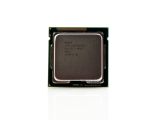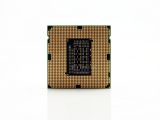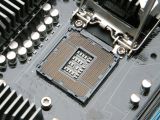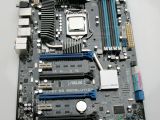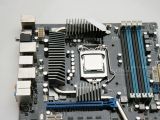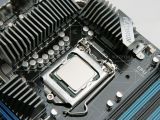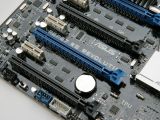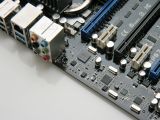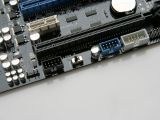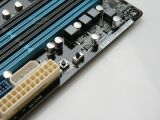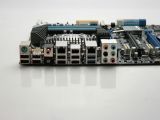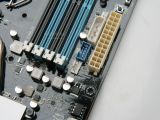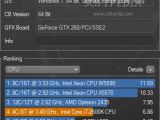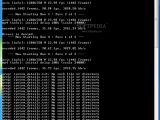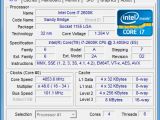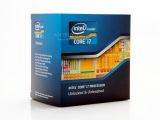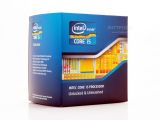After reviewing Sandy Bridge and sharing our thoughts regarding Intel's second generation Core processors, it's now time to put this new architecture to the test and see just how far it can overclock.
Before starting our adventure, it's important to note that Intel decided upon using an entirely new approach to overclocking with Sandy Bridge as it locked the BLCK adjustment and went with an open multiplier instead.
According to Intel, they were forced to do this since the ring bus introduced with Sandy Bridge has to remain in sync with the rest of the chip and a locked BLCK design is the only thing that could allow for this to happen.
The open multiplier, however, does allow for overclocking, but it all depends on the chip that you choose, or better said on the chip's support for Turbo Boost.
This means that Core i3 processors, which don't support Turbo Boost, will only run at their default clock speed.
Core i5, on the other hand, and Core i7 have a partially unlocked multiplier that can go as high as four bins above the maximum Turbo multi.
Finally, the K marked chips allow for the multiplier to be freely set for anywhere in between x16 to x57.
Why Intel decided to set this upper limit is open for debate, but, most probably, the chip giant didn't want to cannibalize the sales of its high-end Bloomfield and Gulftown processors.
This meant that the maximum frequency that can be reached by K SKUs is close to 6GHz as some motherboards allow for the BCLK to be slightly raised over the stock 100MHz, to 105MHz or so.
However, this shouldn't prove to be a limit for those of you that go for air or even water-cooling as 6GHZ is more than enough for day-to-day use (provided that you can keep the temperatures in check).
Hardware Specifications To find out what Sandy Bridge is capable of, we had at our disposal an Asus P8P67 WS Revolution motherboard as well as an Intel Core i7 2600K CPU.
The 2600K is Intel's highest clocked Sandy Bridge processor to date, its standard clock rate being set at 3.4GHz.
Furthermore, thanks to Turbo Core, this can be further increased to 3.8GHz in certain usage scenarios.
Moving to the motherboard provided by Asus, this is built on top of the Intel P67 Express chipset and carries all the major features that one would expect from a top of the line board as well as some equally welcomed Asus additions.
I am talking here about the company's well-known TPU and EPU engines as well as about the easy-to-use uEFI BIOS.
In addition, the board's capabilities are further enhanced by the presence of an nForce 200 chip that enables the use of 3-way SLI and four-way CrossFire configurations or up to four NVIDIA Quadro GPUs at once.
The number of SATA ports has also been enhanced thanks to a Marvell controller, which provides two additional 6Gbit SATA connectors.
CPU power delivery is achieved by using 16+2 all digital phases that sport a DIGI+ VRM architecture.
The test system used: Intel Core i7 2600K processor Asus P8P67 WS Revolution motherboard Nvidia GTX 260 216 graphics card Kingston KHX2133C9AD3T1K3/6GX memory kit Kingston SSDNow V+ 64GB Integrated Audio and Network Windows 7 Ultimate 64-bit Operating system Intel LGA 1155 tower cooler Basic Overclocking Settings Before starting our overclocking experiment, I'll go over a few settings that impact the Sandy Bridge overclocking experience.
Most of these are common to LGA 1156 so I won't go into details, but there are some changes that make Sandy Bridge a little more particular.
For starters, the most important setting is the CPU Ratio as this is where all the additional performance comes from.
Naturally, a higher value means a higher overclock (the resulting CPU frequency can be calculated by multiplying whatever value you put in here with 100, as this is the processor's default BLCK).
Next in line is the CPU base clock (BLCK) that has only a limited effect on Sandy Bridge as its values can be changed by just a few MHz.
At first you'll be surprised of the high values that are displayed in this field, but you have to keep in mind that for SNB the adjustments are made in 0.1MHz steps.
On our particular motherboard, the BLCK could go as high as 10MHz in BIOS, but the ultimate value that you can reach depends only on the processor used.
Moving on, we come to the CPU voltage setting that should be increased together with the CPU clock speed.
Since Sandy Bridge is built on the 32nm manufacturing process and features pretty low stock voltage settings, I wouldn't recommend going over 1.4V for day-to-day use as this will surely limit the CPUs life span.
A strong cooler should be also used for keeping the CPU temperatures in check.
Other voltages can also be controlled from the BIOS, but in Sandy Bridge these have a limited result on overclocking.
Far more important, however, is the memory multiplier setting that allows for the memory ratio to be set.
Depending on the multiplier used, the memory modules can run at speeds as high as 2133MHz, although this may require a bump in memory voltage.
Load-line calibration is another setting that affects the voltage provided of the chip as it compensates for Vdroop.
For an improved overclock, I suggest this to be set at something like 'High' (as it was the case with our Asus motherboard), although there are some people that claim that disabling it is better in the long run for the CPU.
Although we used an Asus motherboard, most of these features should be available on all other P67 boards.
Besides these, there are a few other Asus specific settings that one needs to go through before overclocking one’s Sandy Bridge CPU.
The first of these is the Phase Control technology which controls the number of active phases in order to save power.
Since running with a reduced number of power phases isn't something I would recommend for overclocking, I set the option to Extreme, meaning that all PWM phases are enabled all the time.
Another available setting is called VRM Frequency and is usually reserved for when using more extreme cooling methods.
However, you can play around with it if you want as in some cases this function can unlock a few extra MHz from your CPU.
And last, but certainly not least, are the Enhanced SpeedStep Technology and Turbo Boost settings.
Contrary to LGA 1155 overclocking, these have to be enabled in the BIOS for the motherboard to allow for the multiplier to be raised.
Intel Core i7 2600K Overclocking Now that we have come to the overclocking part of the article, I am going to start by running a short suite of benchmark applications to have a comparison base for our experiment.
The 2600K was run at its default frequencies with the Optimized Default settings found inside the BIOS.
As you already know from our Sandy Bridge review, the 2600K is already a fast CPU, its quad-core (eight thread) design being particularly well suited for highly parallel applications.
However, the Turbo Boost technology as well as the 3.4GHz stock frequency make this a formidable performer in other tasks as well.
In order to find the highest frequency that the Core i7 2600K is capable of, we increased the multiplier gradually until the CPU started failing our stability tests.
When this happened, the processor voltage was increased and the tests were run again in order to see if the system has become stable.
If this was the case, we upped the multiplier yet again to see where we would stop this time.
The procedure was repeated until we reached a voltage level that didn't bring any major increases in operation speed.
In our case, this happened at about 1.37V, a value that we consider safe for 24/7 use on Sandy Bridge.
By now, the CPU was clocked at an impressive 4,800MHz, more that what we expected when starting this experiment.
But we thought that there was still a little bit left in our 2600K, so we raised the BCLK slightly to see what would happen in this case.
Sadly, we could raise the back clock by only 1MHz before the chip reached its maximum frequency for the said voltage.
At this point, raising the BCLK further made the system fail our mandatory two-hour Prime 95 stress test, so we had to settle for 4,853MHz.
This represents a 42% clock increase over the standard 3.4GHz frequency.
To see where has this left us in term of performances, we run our benchmarking suite again and analyzed the results.
As you can most certainly see from the graphics provided, the 1,453MHz overclock lead to an impressive performance increase especially in computing intensive applications such as CineBench 11.5 or x264 video encoding.
Even gamers could gain a few frames per second depending on the title, but if you are GPU limited, as we were, the performance increase won't be huge.
Instead, imagine our surprise, when we found out that instead the Santa Clara based company managed to produce one of its best overclocking architectures to date. As you could definitely see from our results, the Core i7 2600K that we had at our disposal, achieved a 42% overclock without breaking a sweat and without requiring anything more than a standard tower cooler as everybody seems to now own. However, there is a catch. In order to go as high as we did, one has to go for a K series processor since these are the only CPUs in the Sandy Bridge lineup to feature a fully unlocked multiplier. The regular non-K chips don't feature such a multiplier and thus come with limited overclocking capabilities, well below the CPU's limit.Conclusions
To make matters worse, those that can afford nothing more than a Core i3 will have to forget about overclocking all together since these chips don't support it at all (outside of the very limited BCLK adjustment available).
And there's the 6GHz overclock limit that affects the K series processors.
While regular users who go for air or water cooling setups won't be too discouraged by this, those who rely on more extreme methods for keeping temperatures in check will surely regret its presence.
In the end, it seems like Intel managed to achieve its goal as it had effectively forced enthusiasts to shell out more money for truly overclockable processors while also removing any chance you had of getting high-end performance from a mid-range Core i3 or Core i5 chip.
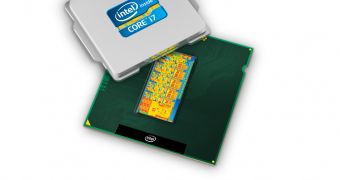
 14 DAY TRIAL //
14 DAY TRIAL // 
